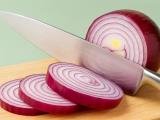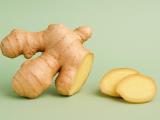What does cognitive decline mean? It’s a gradual decrease in memory, thinking speed, and attention that comes with age. We’re not talking about a disease, but a trend that you can slow down with good habits.
Why autumn foods help the brain
Autumn vegetables are like a team with various superpowers:
- Vitamin C (for example in sweet potatoes and cranberries) helps the immune system and reduces inflammation (these are the body’s alarm systems—useful to a point, but if prolonged, they can cause harm).
- Beta-carotene (in sweet potatoes) is an orange pigment, which the body converts as needed into vitamin A, involved in cell protection, including in the eyes and brain.
- Folate (in beetroot and leafy greens) is a form of vitamin B9, key for cell division and proper functioning of the nervous system. Folate helps lower homocysteine (an amino acid in the blood; too much of it is linked to poorer blood vessel and memory health).
- Nitrates from beetroot can convert in the body into nitric oxide, which dilates blood vessels and improves blood flow—even in the brain.
- Polyphenols (in cranberries and greens) are plant defenders, often linked in studies to better memory and slower aging of cells.
- Gingerols (in ginger) are spicy compounds that act as natural support against silent inflammation.
- Leafy greens and memory: a large observational analysis showed that just one serving of leafy greens a day is associated with a slower decline in cognitive abilities compared to those who rarely eat them.
- Cranberries and the elderly: in 2022, a group of older adults who consumed cranberries daily achieved, on average, better memory test scores and showed favorable changes in biomarkers associated with brain health.
- Beetroot and blood flow: experiments with beetroot juice in adults repeatedly showed short-term improved blood flow to the brain and better results in tasks requiring attention.
Sweet potato is full of beta-carotene, vitamin C, and fiber (fiber acts as a broom for the gut, helps stabilize sugar, and feeds good gut bacteria). One medium baked tuber can provide 200–400% of daily vitamin A needs (from beta-carotene) and 20–30% of vitamin C needs. That’s a lot for something that costs just a few euros and cooks easily in any oven.
How it supports the brain: Antioxidants help reduce oxidative stress, and fiber supports the gut (the gut and brain are connected via the vagus nerve like a telephone), helping them function better. When the gut is happy, you’ll often notice a calmer mind.
Home solutions:
- Simple way: Cut into wedges, drizzle with olive oil, add cinnamon (traditionally: warms and aids digestion) and a pinch of salt. Bake for 25–35 minutes at about 200{-15696}C.
- Folk version: When baked, add a spoonful of hazelnut or almond butter and a slice of apple. You'll get a soft, warm sandwich for your brain.
2. Ginger: Small Root, Big Warmth
Ginger contains vitamin B6, manganese, and gingerols (these are spicy compounds with anti-inflammatory effects). Traditionally, it’s used for digestion, motion sickness, and cold mornings.
How it supports the brain: Slow, silent inflammation is linked to faster memory decline. Ginger helps douse the slow-burning fire. Studies in adults link ginger intake with better attention test results and quicker memory function (it’s not magic, but small, important effects).
Home solutions:
- Ginger tea: Pour hot water over 3–5 thin slices of ginger, add lemon and a teaspoon of honey (honey is a natural sugar + traces of protective plant compounds).
- Vegetable soup: When saut{-15447}ing onion and carrot, add 1 cm of grated ginger. The warmth spreads comfortably through your body…
3. Beetroot: The Red Turbo for Brain Flow
Beetroot is packed with folate (B9), potassium, some vitamin C, and nitrates (nitrates are compounds that can become nitric oxide and help widen blood vessels, easing blood flow). One cup of cooked beetroot provides 30–35% of daily folate needs.
How it supports the brain: Better blood flow means more oxygen and nutrients reach the brain. Several studies observed that beetroot juice before a mental test or exercise led to noticeable short-term improvement on tasks requiring focus. Folk wisdom has known this for ages: red cheeks, red thoughts.
Home solutions:
- Baked beetroot: Wrap in parchment or foil, oven at 180–200{-15696}C, bake 45–60 minutes (depending on size). Once soft, peel and add goat cheese or a spoonful of horseradish (the root is sharp, clears the nose, and wakes you up).
- Memory salad: Cooked beetroot + a spoonful of sauerkraut (fermented cabbage is an excellent probiotic and brings good bacteria), a pinch of caraway, and walnuts. A simple, long-lasting meal that costs little.
4. Cranberries: Small, Sour and Smart
Cranberries are an excellent rich source of vitamin C, manganese, and polyphenols which act as antioxidants and anti-inflammatories. In practice, this means they help cleanse the effects of daily stress (read: poor food choices).
What science says: In a group of older people who consumed cranberries daily, better memory and favorable brain health marker changes were noticed. With cranberries, the key is regular intake in small amounts—not a huge amount at once, but a little every day.
Home solutions:
- Frozen cranberries: Often cheaper than fresh. Put a spoonful or two in oatmeal.
- Quick sauce: In a pot, add a cup of cranberries, half a cup of water, a spoon of honey, and a slice of orange. Simmer for 10 minutes. You’ll get a sauce that keeps in the fridge and goes well with yogurt or baked sweet potato.
5. Leafy Greens: The Green Safety Net
Kale, spinach, chard, curly kale, and their relatives are rich in vitamin K, vitamin E, vitamin C, folate, and potassium… Just one handful a day is enough to stay safe with essential micronutrients. Dine on green, slowly but steadily.
What science says: Several analyses have shown that people who eat a portion of leafy greens daily, on average, achieve better memory test results and show slower decline with age. Still, it’s not a magic pill, but a plate of habit.
Home solutions:
- Saut{-15447} quickly on a spoonful of oil with garlic (garlic is an excellent source of sulfur compounds, which traditionally ‘clean the blood’), add a handful of greens, a pinch of salt, and a drop of lemon. In two minutes, you have a green side dish that goes well with any meal. (FW)
 Would you like to be informed about news on the website?
Just enter your e-mailHealthiest Autumn FoodsBoost MemoryBrain Health AntioxidantsCognitive Decline PreventionAutumn Superfoods
Would you like to be informed about news on the website?
Just enter your e-mailHealthiest Autumn FoodsBoost MemoryBrain Health AntioxidantsCognitive Decline PreventionAutumn Superfoods










